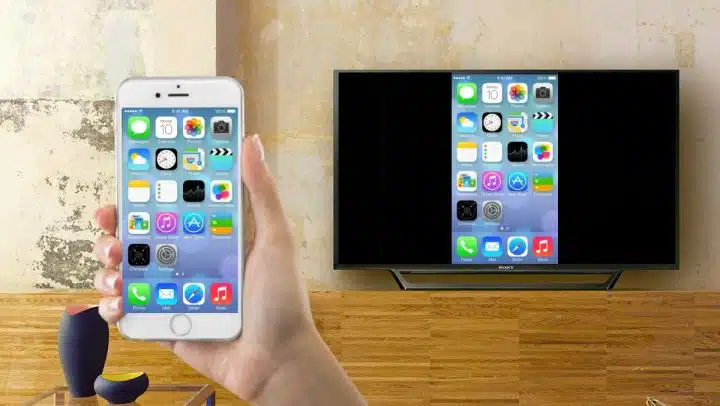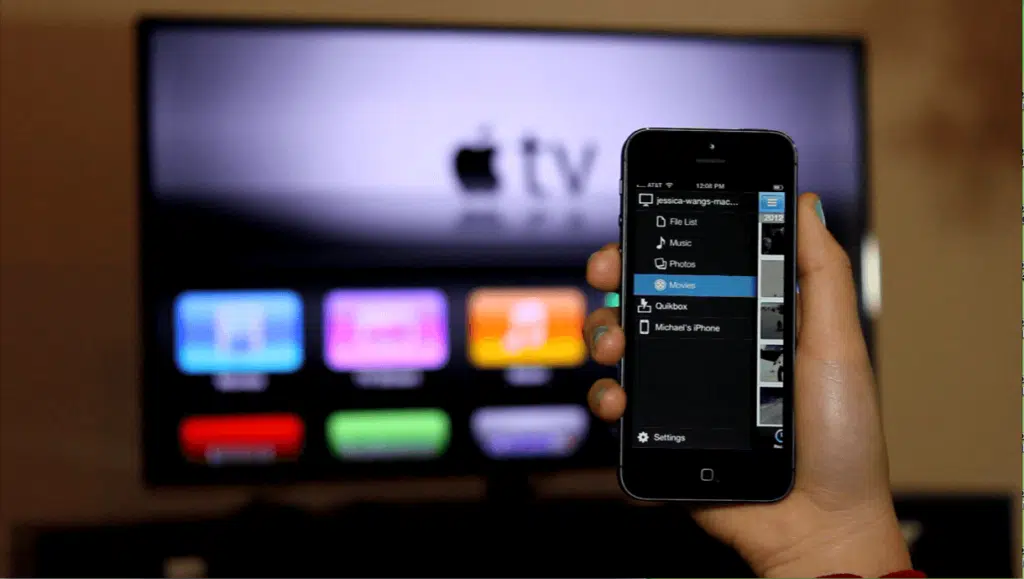Table of Contents
How To Connect TV To iPhone?
How To Connect TV To iPhone? Connecting your iPhone to a TV is easy and convenient. You can use multiple methods to mirror your iPhone screen, from wireless AirPlay to using an HDMI cable.
Make sure your TV and iPhone are on the same Wi-Fi network and both are powered on. Swipe down on your iPhone to open Control Center and tap the Screen Mirroring icon (two boxes next to each other). You may be prompted for an AirPlay passcode.
Features Of Connect TV To iPhone
- You can mirror your iPhone’s display on a TV via Wi-Fi or wired, as long as the TV is an AirPlay 2-compatible TV. The TV must also support the same Wi-Fi network as your iPhone. Make sure the TV is turned on has an HDMI port, and has a USB-C or Lightning-to-HDMI cable handy. Apple sells an HDMI adapter in its online store, but you can also find similar ones on Amazon that work just as well for less money. Plug one end of the cable into the TV’s HDMI port, and the other into your iPhone. Turn on your TV, and switch it to the HDMI input you just connected it to (the number may be different depending on your TV).
- Open your iPhone’s Control Center — swipe down from the top right corner on an iPhone X or later or an iPad with iOS 13 or later, or swipe up from the bottom edge of your screen on an iPhone 8 or earlier or an iPad running iOS 11 or earlier — then tap the Screen Mirroring icon. If prompted, enter an AirPlay passcode on the TV screen (this might be necessary for the first time only).
- Anything displayed on your iPhone should now appear on the TV’s screen, including pictures, videos, and apps. The sound from the apps should come through your TV’s speakers (or connected headphones, if compatible). To stop mirroring, open your Control Center and tap the Screen Mirroring tile again.
AirPlay
If you have an iPhone X, iPhone 8 Plus, or iPhone 7 Plus, and an Apple TV or Roku device or another smart TV that supports AirPlay (or AirPlay 2), it’s a piece of cake to get video, music, photos, or whatever else you’re doing on your phone or tablet onto the big screen. With newer TVs, it’s even easier, thanks to the built-in AirPlay feature called screen mirroring.
To use it, make sure your iPhone and TV are on the same Wi-Fi network. Then, either swipe down on the older phones or up on the new ones to open Control Center, and tap the AirPlay or Screen Mirroring icon. If prompted for an AirPlay passcode, type it into your iPhone or iPad.
Then connect a Lightning cable to the adapter, and the other end of the cable to your TV. Make sure the TV is set to the HDMI input that matches the port you connected it to – usually, that means an HDMI cable connecting to a free HDMI port on your TV, but sometimes you’ll need an additional USB-C or HDMI cable (the adapter has an extra Lightning port that also doubles as an AC adapter for charging).
Once everything is hooked up, you should see the iPhone’s display mirrored on the TV. You can then use your TV’s controls or remote to adjust the picture and sound.
HDMI
While iPhones no longer ship with an HDMI port, the good news is that there are plenty of wireless options for streaming videos or even mirroring your phone’s display. Whether you prefer to kick it old-school with an HDMI dongle, rock out with AirPlay, or roll with Chromecast, the process is straightforward.
The first thing you’ll need to do is make sure your TV and iPhone are connected to the same Wi-Fi network. Then, open an app that supports streaming to a TV (for example, YouTube or Netflix), and tap the AirPlay or casting icon. Your TV should appear in the list of available devices. Tap it to connect. Once your TV is connected, you can use the TV controls to adjust the audio and video settings.
You can also use a single cable to connect your iPhone to a TV with HDMI support. You’ll need an adapter that has a Lightning connector on one end and either an HDMI or VGA connector on the other. Apple makes a Lightning Digital AV Adapter, but third-party ones should work as well.
Plug the adapter into your iPhone, then into an HDMI port on your TV or monitor. The number on the port corresponds to the input you’ll need to select with your TV’s remote control. Once the connection is complete, your iPhone’s screen will be mirrored on the TV.
Screen Mirroring
If you have an Apple TV or another AirPlay 2-compatible device, you can use Screen Mirroring to display what’s on your iPhone to the TV. To start, make sure both your devices are on the same Wi-Fi network. Then, swipe down or up on your iPhone to open Control Center (iPhone X and later, and iPad with iOS 12 and later). Tap the screen mirroring icon and select your TV. If prompted, enter the four-digit code shown on your TV.
This is a convenient and easy way to stream videos, give presentations, or just browse the web on a bigger screen. You can even use your keyboard and mouse with the TV, although keep in mind that anything you do on your iPhone while mirroring will also show up on the TV.
The screen mirroring feature works via Wi-Fi. And uses an app to generate a video stream that includes your screen content and system audio in real time. The app then sends that data to the TV using various communication protocols. The TV then plays that stream, just like it would if you were connected directly via HDMI.
To connect your iPhone to a TV using this method. You’ll need an adapter with a Lightning connector on one end and either an HDMI. Or VGA connector on the other. Apple makes a Lightning Digital AV Adapter that does the job, but many third-party options work well as well.
Bluetooth
Despite being in use for 20 years or so —making it almost prehistoric in the world of consumer. Tech—Bluetooth is still the go-to method for connecting. Wirelessly to our gadgets. It’s built into billions of devices and is easy to set up. Making it a solid choice for streaming movies, TV shows, and music.
To stream video or mirror your screen. You’ll need a Bluetooth transmitter and receiver that can pair with your iOS device. You can get a Bluetooth audio receiver for around $30. Or you can opt for an inexpensive one. USB transmitter that plugs into a standard left/right 3.5mm stereo input port (using red and white cables).
If you’re on the same Wi-Fi network as your iPhone and your TV. Open Control Center (swipe down from the top right corner on newer models. And up from the bottom on older ones) and tap the TV icon to turn on Bluetooth. You can then select the TV from the list of available devices if it’s discoverable.
Some apps will automatically blend AirPlay and other wireless casting options into one menu for convenience. For example. Tapping the YouTube button in a video app will bring up a submenu that lets you choose between AirPlay. And Chromecast and connect directly to the TV with a QR code. It’s also worth noting that using a Bluetooth connection may consume more battery power than connecting via a wired cable.
Conclusion
Mirroring your iPhone to your TV can vastly improve the viewing experience. There are several ways to do it, either wirelessly or through a wired connection. It also depends on the type of TV you have and your preferences. Regardless of the method you choose, there are some important things to remember. The first is to make sure your TV and iPhone are connected to the same Wi-Fi network. This will ensure both devices have the same security settings and can communicate with each other. Then, open the Control Center on your iPhone (swipe up or down) and select “Screen Mirroring.” Choose your TV from the list of available options and follow any on-screen instructions to connect them. Once the connection is established, any content you play on your iPhone will appear on the TV.






Add comment